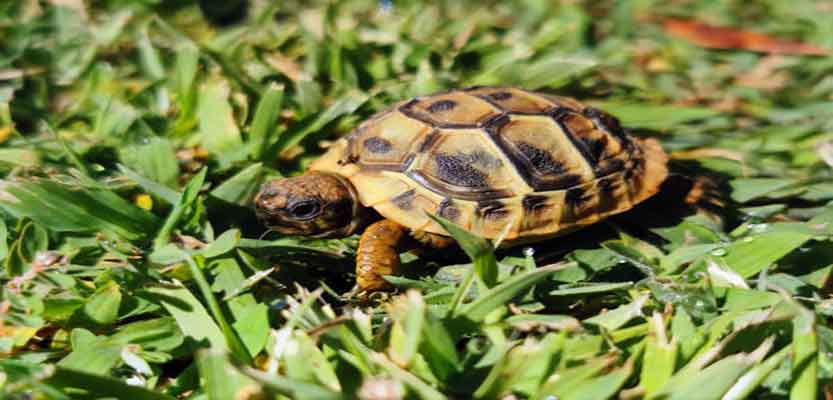
The marginated tortoise has its origins in the Balkans and Greece in southern Europe and Italy, respectively. Along with four additional tortoise species, they are commonly referred to as the Mediterranean tortoises and are recommended for novice or amateur pet enthusiasts. It is the largest known European tortoise by a significant margin. If cared for properly, the turtle can live up to a century.
Enclosure
A marginated turtle can reach a maximum length of 14 inches and a maximum weight of 11 pounds. In addition to being enjoyable pets, they are also hardy animals, which necessitates proper housing.
The ideal environment for this type of animal is indoors. You may utilize a tortoise table or any other available open enclosure for this purpose.
Ensure each tortoise has access to a minimum of four square feet of space. Try to give it as much space as possible, if possible. If you intend to house multiple tortoises, such as a female and a male, ensure that the enclosure has sufficient space.
Their housing should also provide them with unique visual obstructions. Typical sight breaks consist of topsoil and play sand.
When it comes to outdoor housing, seek out a secure area. This is especially important for owners of juvenile tortoises. Security assists in preventing elopement, theft, and predation. The location you choose must have adequate space for it.
Your tortoise’s ideal habitat should include grass, soil, and a variety of plants.
Consider storing it in a wooden shelter with a waterproof roof. The lid will provide a dark, cool environment and shield the contents from excessive light. Confirm that the outdoor housing unit is indeed escape-proof by examining it closely. It is known that marginalized tortoises dig and climb over some of their outdoor housing units.
It is not advised to house it in a run on the grass. This is because the grass may be too wet for it, which could lead to health issues.
Temperature
This species of tortoise requires a basking location with acceptable heat levels. It indicates that the temperature should be elevated, but not excessively so. Verify that the coolest portion of the enclosure has a minimum temperature of 22 degrees Celsius. Verify that the warm end has a minimum temperature of 30 degrees Celsius.
For the warmer end, try to ensure that a combined bulb (mercury vapor lamp) or a spot bulb is providing the heat. Between May and September, you can traditionally leave your tortoise outdoors without any form of heating.
After housing their tortoises outdoors, it is not uncommon for many pet owners to provide them with additional heat. Alternately, you could choose to bring them inside the house during inclement weather or at night.
Lighting
Lighting is one of the factors to consider when caring for marginated tortoises. If you plan to house your tortoises indoors, you must provide them with a full spectrum light. The light should emit UVa and UVB light. You have the option of combining mercury vapor bulbs and strip lighting.
The mercury vapor bulb is superior because it also provides a basking light for your pet. Ensure that you replace UV strip lights at the end or beginning of each new season if you use them. If you house them outside, they will receive all the light they need directly from the sun, so you will not need to provide additional lighting.
Humidity
This species thrives in environments with low to moderate humidity. Higher-humidity regions or environments can cause pets to develop respiratory problems. You can always provide your animals with a moist substrate for burrowing. This allows them to regulate their internal temperatures and humidity levels.
Feeding
As with any other pet, a tortoise will require regular feedings. However, keep in mind that the tortoise is a herbivore. Therefore, its diet should reflect this lifestyle. Hostas, dandelions, clover, geraniums, sow thistle, pansies, vetch, plantains, and bindweed will all be included in its diet.
Ensure that it receives daily feedings that are sufficient to cover its entire shell. Before feeding the weeds, be sure to dust them with calcium.
Hibernation
During the cold winter months, marginated tortoises are known to hibernate naturally in the wild. It is therefore recommended that you ensure your tortoise hibernates annually for three to four months. Their hibernation temperature should range from 4 to 8 degrees Celsius.
As seen in the preceding section, marginated tortoises require specific living conditions, diet, lighting, and temperature in order to thrive. If you have any questions, be sure to consult local tortoise and pet store owners. The eyes of a healthy marginated tortoise should be clear and bright, and its shell should be solid. It should be active as well.
